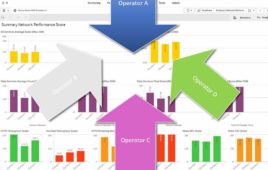Telecommunications providers are re-inventing themselves in order to stay relevant in a fast-paced, cloud-native, data-driven AI world. At the heart of technology disruption, domain-driven design utilizes rapidly evolving technologies such as microservices and containers to change the software delivery paradigm. This agility is at the core of the increasingly popular ‘uberized’ business models. The race is now on to evolve the telecommunications sector.
Due to the scarcity in the market of properly skilled resources, large service providers have no choice but to re-train their existing workforces. Even if these resources existed externally, the cost of onboarding and re-training them in the way of doing business within the service provider space is likely to be nearly as high as re-tooling.
It is said that human behavior is derived from three primary sources: desire, emotion, and knowledge. If we are to change the organizational behavior and drive a truly digitally disruptive mindset, it requires a re-thinking of how we impart ‘new’ knowledge to our existing workforce. This is not a simple one-time effort, but a continuous learning mindset that is required to drive success in the rapidly evolving technology space.
As I changed roles within Amdocs from heading one of our largest business divisions to leading the charge to transform the company’s technology footprint, I realized almost instantly that strategy and technology are the easiest barriers to overcome. The development and transformation of human capital is where the ‘heart surgery’ begins. It is also where the highest reward is likely to be achieved.
Companies such as AT&T have taken the lead on this transformation. With senior executives like Chief Strategy Officer and Group President John Donovan taking a personal interest in re-defining rapid continuous learning and embarking on ambitious programs such as Workforce 2020, AT&T aims to simplify job roles and foster the development of relevant and interchangeable skills.
Retraining the telco workforce
Although technology has evolved at a breakneck pace, the practice of learning and teaching – in many ways – still remains archaic, both in our schools and our higher learning institutions. However, the disruption we see in organizational context(s) also encourages disruption across verticals. For example; Georgia Tech, AT&T, and Udacity created a partnership that delivers fully accredited online masters programs in computer science via a MOOC (Massive Open Online Course) platform.
Udacity offers what they term ‘Nanodegrees.’ The Nanodegree programs are rapid learning curricula that can be obtained in 6-12 months with a simple, monthly subscription fee. There are many examples of disruptive learning, including Coursera and EdX, but the consensus is that higher education is now a critical element of a continuous talent development cycle for companies that want to stay relevant.
One of my core beliefs is that unless you are constantly re-inventing yourself, you will be relegated to the age of the dinosaurs. In my own career, though I began in engineering, I have constantly rotated between technology and business roles. This movement can be partially attributed to my love of learning, but also to the fact that if I can get out of bed and do my job without having to think about it, I always felt like it was time to climb the next mountain.
The change over the last couple of decades has been the convenient access to information and knowledge; the catalyst over the next decade will be tailored consumption based on learning ingestion traits. Imagine having some type of neuroimaging done and, as a result, an online course is tailored for you individually based on how much knowledge you have and how you absorb information. Sound like science fiction? Richard Haier, a researcher at the University of California, has been looking into intelligence with the hope that maybe someday schools can scan a child’s brain to determine which educational environment they would thrive in. Almost sounds like an episode of Netflix’s Black Mirror, where science fiction approaches reality.
Identifying the skills gap and putting agile programs in place in a continuous learning environment becomes a foundational element to succeed. Coupled with real incentives, such as compensation and career roadmaps, education becomes a key part of employee retention and satisfaction. One of my favorite cliché snippets floating around the internet was supposedly a conversation between a CFO and a CEO. The CFO asks “What happens if we spend money training our people and they leave?” to which the CEO replied, “What happens if we don’t and they stay?”
Now more than ever, with the pace of change accelerating, continuous talent development is no longer a task relegated to the HR department. The C-suite must recognize the importance of, and own, the re-tooling of the global workforce.
Anthony Goonetilleke is Chief Technologist and Head of Product at Amdocs. In this role, Goonetilleke oversees technology across the company based on a strong understanding for the needs of the telecommunications industry. He has been with Amdocs for almost twenty years in various management roles.
Before becoming Chief Technologist and Head of Product, Goonetilleke was president of the AT&T division within Amdocs, responsible for the company’s largest customer. He was also president of the Advertising and Media practice, in which he oversaw Amdocs’ relations with advertising service providers, media publishers and ad agencies. Goonetilleke was also the driving force behind Inspire, a women’s leadership program aimed at creating a path for the next generation of women leaders.
Prior to joining Amdocs, Goonetilleke led the development of one of the first IP-based heterogeneous networks for the University of Melbourne, and was an active developer within the early x86 Linux community during the 90s.
You can find him on Twitter at @anthonygeee




